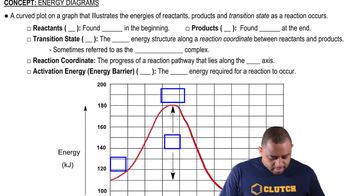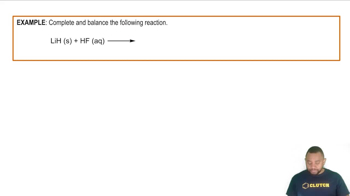Here are the essential concepts you must grasp in order to answer the question correctly.
Energy Diagrams
Energy diagrams visually represent the energy changes during a chemical reaction. They typically plot the energy of the system against the progress of the reaction, illustrating the energy of reactants, products, and any intermediates. Understanding these diagrams helps in analyzing the stability of different species and the overall energy changes involved in the reaction.
Recommended video:
Reactants and Products
In a chemical reaction, reactants are the starting substances that undergo transformation, while products are the substances formed as a result of the reaction. Identifying these components is crucial for understanding the reaction's direction and the energy changes that occur. The energy diagram will show the relative energy levels of reactants and products, indicating whether the reaction is exothermic or endothermic.
Recommended video:
Production of Hydrogen Example
Intermediates
Intermediates are transient species formed during the course of a reaction that are not present in the final products. They typically exist at a higher energy level than the reactants and products and are crucial for understanding the reaction mechanism. In energy diagrams, intermediates are represented as local minima, indicating points of stability before the reaction proceeds to completion.
Recommended video:
Reaction Mechanism Example

 Verified step by step guidance
Verified step by step guidance


